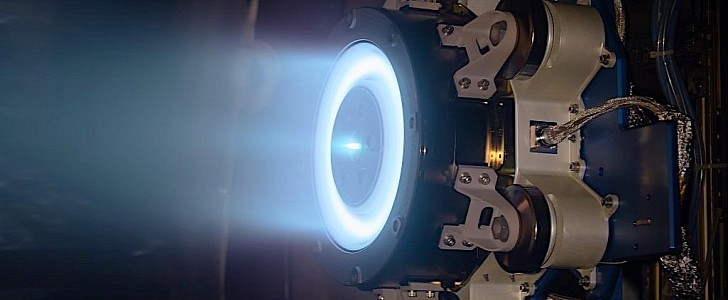Come… sometime soon, the Moon will have its very own space station. It will be put together by NASA and partners with the goal of supporting Artemis missions to the surface of the satellite, but also, probably, to become a staging point for a run for Mars.
At the time of writing, and given how the Artemis program is yet to start, the station, which is called, fittingly, Gateway, does not come with an exact ready date attached. The agency is however targeting the launch of the station’s first modules, the Power and Propulsion Element (PPE) and the Habitation and Logistic Outpost (HALO), in late 2024, on board a SpaceX Falcon Heavy rocket.
That pretty much means some of the hardware meant for the orbiting habitat has long left the drawing board, and is already in testing stages. Like, say, the PPE, which is currently being put through its paces at the Glenn Research Center in Cleveland.
The hardware’s build is handled by Maxar Technologies, but integrates bits supplied by Aerojet Rocketdyne and Busek. Back in April, NASA completed the first phase of testing, and plans to continue to put the PPE through its paces in the coming months.
PPE is the one which will be responsible for providing the station with power, communications, and, of course, propulsion, because yes, even space stations need to move their position from time to time. It takes sunlight and xenon, converts them into power, which is then used “to produce long-duration, highly efficient thrust, providing mission flexibility and reduced costs.”
This space station engine, if you will, thus uses solar electric propulsion to do its thing. PPE will comprise two propulsion systems, one 6-kilowatt and the other 12- kilowatt, thrusters, power processing units, and flow controllers.
Aside for the PPE and HALO, the space station will also comprise an external robotic system (GERS, made by the Canadian space agency), a logistics module (SpaceX), a refueler (ESA), an international habitat (ESA and JAXA), and an European service module (ESA).
That pretty much means some of the hardware meant for the orbiting habitat has long left the drawing board, and is already in testing stages. Like, say, the PPE, which is currently being put through its paces at the Glenn Research Center in Cleveland.
The hardware’s build is handled by Maxar Technologies, but integrates bits supplied by Aerojet Rocketdyne and Busek. Back in April, NASA completed the first phase of testing, and plans to continue to put the PPE through its paces in the coming months.
PPE is the one which will be responsible for providing the station with power, communications, and, of course, propulsion, because yes, even space stations need to move their position from time to time. It takes sunlight and xenon, converts them into power, which is then used “to produce long-duration, highly efficient thrust, providing mission flexibility and reduced costs.”
This space station engine, if you will, thus uses solar electric propulsion to do its thing. PPE will comprise two propulsion systems, one 6-kilowatt and the other 12- kilowatt, thrusters, power processing units, and flow controllers.
Aside for the PPE and HALO, the space station will also comprise an external robotic system (GERS, made by the Canadian space agency), a logistics module (SpaceX), a refueler (ESA), an international habitat (ESA and JAXA), and an European service module (ESA).











